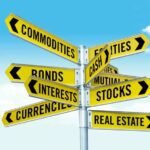
In the world of investing, venturing beyond the traditional avenues of stocks, bonds, and mutual funds can lead to unique and potentially lucrative opportunities.
Off-the-grid investments refer to those not found in the usual markets, offering diversification, potential for high returns, and the excitement of exploring lesser-known territories. This blog explores various unconventional investment opportunities, highlighting their benefits, risks, and real-world examples to guide both new and seasoned investors looking for something different.
The Allure of Alternative Investments
Alternative investments include assets like real estate, commodities, rare collectibles, and even cryptocurrencies. These investments often provide a hedge against inflation and a low correlation with traditional markets, making them an appealing option for portfolio diversification. As traditional markets become increasingly volatile, more investors are looking toward these unconventional avenues to secure their wealth.
Investing in Real Estate: Opportunities Beyond Residential Housing
Real estate investment doesn’t have to stop at residential properties. Unique opportunities exist in commercial real estate, industrial properties, and land acquisitions. For example, investing in parking lots in urban areas has shown surprising profitability, especially as cities continue to grow and space becomes a premium commodity.
Real World Example: Consider the transformation of Detroit, Michigan, where savvy investors have turned abandoned industrial sites into thriving commercial hubs, significantly increasing their value.
Commodities: The Staple of Off-the-Grid Investing
Commodities like gold, oil, and agricultural products offer a tangible asset class that can serve as a safe haven during times of economic uncertainty. Furthermore, investing in renewable resources, such as solar energy or sustainable timber, aligns with global shifts toward environmental sustainability.
Data Point: According to the World Gold Council, investment demand for gold increased by 20% in the last year, reflecting its status as a protective asset during economic downturns.
Collectibles: Art, Antiques, and More
Investing in collectibles such as art, antiques, vintage cars, and rare wines combines passion with profit. These investments not only potentially increase in value over time but also offer the joy of ownership and a deep dive into their histories.
Real World Example: The sale of Leonardo da Vinci’s “Salvator Mundi” for over $450 million in 2017 underscores the incredible potential of art investments.
Cryptocurrencies and Blockchain Technology
While highly volatile, cryptocurrencies and blockchain ventures represent the frontier of digital finance. Early investors in Bitcoin, for instance, saw unprecedented returns as the currency surged from mere cents to thousands of dollars.
Data Point: As of 2020, the blockchain market is expected to expand to over $23 billion by 2023, indicating significant growth and investment potential.
Wine Investment: A Blend of Luxury and Profit
Fine wine has emerged as a compelling investment, often outperforming other assets in terms of returns. Wine investment funds and buying shares in vineyards offer a pathway to engage with this market.
Real World Example: The Liv-ex Fine Wine 100 Index showed an appreciation of over 120% in the past decade, proving its worth as a stable investment.
Rare Coins and Stamps: Small but Mighty
The niche markets of rare coins and stamps attract enthusiasts and investors alike. The rarity and historical significance of these items can lead to substantial returns.
Real World Example: A rare 1847 Mauritius “Post Office” stamp sold for nearly $2 million at auction, highlighting the lucrative nature of these collectibles.
Farmland: The Foundation of Food Security
Investing in farmland offers a stable investment backed by a tangible asset—land. With the global population growing, the demand for food production makes farmland an increasingly attractive option.
Data Point: Farmland has had an average annual return of approximately 12% over the last 20 years, making it a remarkably resilient investment.
The Risks of Off-the-Grid Investments
While the potential for high returns is significant, these investments come with their own set of risks. Illiquidity, valuation difficulties, and high entry costs can be barriers to entry. Additionally, the lack of regulation in some of these markets can increase the risk of fraud.
Mitigation Strategies: Proper due diligence, consultation with experts, and a diversified portfolio can help mitigate these risks and safeguard investments.
Conclusion
Exploring off-the-grid investments opens up a new realm of possibilities for those willing to step away from traditional markets. Whether it’s investing in the tangible asset of gold, the digital frontier of cryptocurrencies, or the enduring value of rare collectibles, these opportunities offer a unique blend of risk and reward. By understanding the markets, conducting thorough research, and approaching with caution, investors can unlock the potential of alternative investments and achieve their financial goals.





